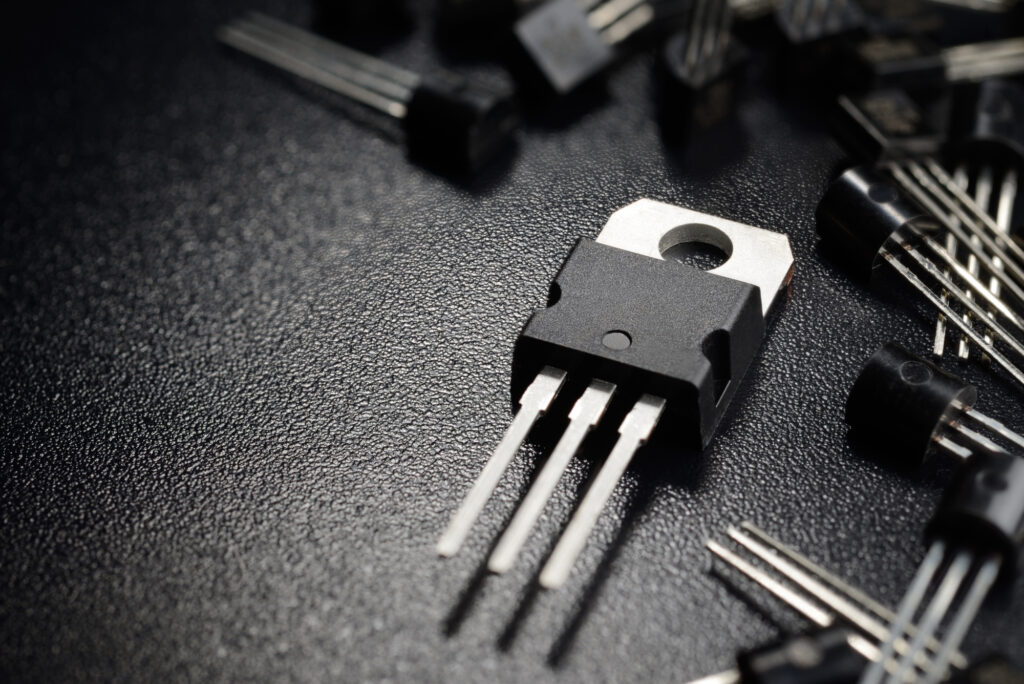MOSFET
MOSFET: A Different Type of Transistor
A MOSFET (Metal-Oxide-Semiconductor Field-Effect Transistor) is a type of transistor that is widely used in electronic circuits for amplification, switching, and control of electrical signals. It is a key component in modern digital and analog circuits due to its high switching speeds, low power consumption, and compact size.
Invention and Development of MOSFETs
The MOSFET was invented by Mohamed M. Atalla and Dawon Kahng at Bell Labs in the late 1950s. Their work was based on the earlier development of the MOS capacitor by Julius Edgar Lilienfeld in the 1920s and the creation of the junction field-effect transistor (JFET) by William Shockley in the 1950s.
The MOSFET gained significant attention and advancements in the 1960s and 1970s. It was further refined and scaled down as the semiconductor industry progressed, leading to the development of smaller, faster, and more efficient MOSFETs.
Working Principles and Usage in Electronic Circuits
A MOSFET consists of three main regions: the source, the drain, and the gate. These regions are formed on a semiconductor substrate, commonly made of silicon. The gate is separated from the channel (the region between the source and the drain) by a thin insulating layer, typically made of silicon dioxide (SiO2).
The operation of a MOSFET is controlled by the voltage applied to the gate. When a positive voltage is applied to the gate with respect to the source, it creates an electric field in the channel, enabling the flow of current between the source and drain regions. This is known as the “on” state, where the MOSFET acts as a closed switch, allowing the current to flow.
Conversely, when the voltage applied to the gate is below a certain threshold, the MOSFET is in the “off” state. In this state, the electric field in the channel prevents the flow of current between the source and drain, acting as an open switch.
MOSFETs are commonly used in electronic circuits for various purposes:
- Amplification: MOSFETs can be used as amplifiers to amplify weak electrical signals. By applying a small input signal to the gate, the MOSFET can amplify it to a higher level, enabling the accurate reproduction of audio, data, or other signals.
- Switching: MOSFETs are extensively used as electronic switches in digital circuits. Due to their fast switching speeds, they can quickly turn on or off a high-power load, such as a motor or a light, based on the input signal.
- Voltage Regulation: MOSFETs are employed in voltage regulator circuits to control and regulate the output voltage. They can efficiently handle high currents and provide stable voltage outputs.
Types of MOSFETs
There are several types of MOSFETs, each designed for specific applications:
- Enhancement-Mode MOSFET (E-MOSFET): This is the most common type of MOSFET. It requires a positive gate voltage to turn on and allow current flow between the source and drain.
- Depletion-Mode MOSFET (D-MOSFET): In contrast to the E-MOSFET, the D-MOSFET is normally on, and a negative gate voltage is applied to turn it off.
- Power MOSFET: Power MOSFETs are designed to handle high currents and voltages. They are commonly used in power electronics applications such as motor control, power supplies, and inverters.
- CMOS (Complementary MOSFET): CMOS circuits consist of both N-channel and P-channel MOSFETs. They are widely used in
MOSFETs have played a crucial role in the advancement of modern electronics, offering efficient amplification, switching, and control of electrical signals. Invented in the late 1950s, MOSFETs have undergone continuous development and refinement, resulting in smaller, faster, and more power-efficient devices.
Their ability to operate as switches and amplifiers has made them indispensable in various electronic circuits. MOSFETs find applications in digital circuits, where their high switching speeds enable fast and accurate data processing. They are also used in analog circuits for amplifying signals with minimal distortion.
The versatility of MOSFETs extends to voltage regulation, where they provide stable and precise control over output voltages. Additionally, their ability to handle high currents and voltages has made them essential components in power electronics applications.
Different types of MOSFETs, including enhancement-mode, depletion-mode, power MOSFETs, and CMOS, cater to specific circuit requirements and applications.
As the semiconductor industry continues to advance, MOSFETs are likely to undergo further improvements, leading to even smaller sizes, higher speeds, and reduced power consumption. Their widespread usage in electronic devices, from computers and smartphones to electric vehicles and renewable energy systems, ensures that MOSFETs will remain vital components in shaping the future of technology.
In conclusion, the invention and evolution of MOSFETs have revolutionized the world of electronics, enabling more efficient, compact, and versatile circuits. Their impact on various industries and everyday devices is evident, and their future holds the promise of continued advancements, driving innovation and shaping our technologically driven world.

